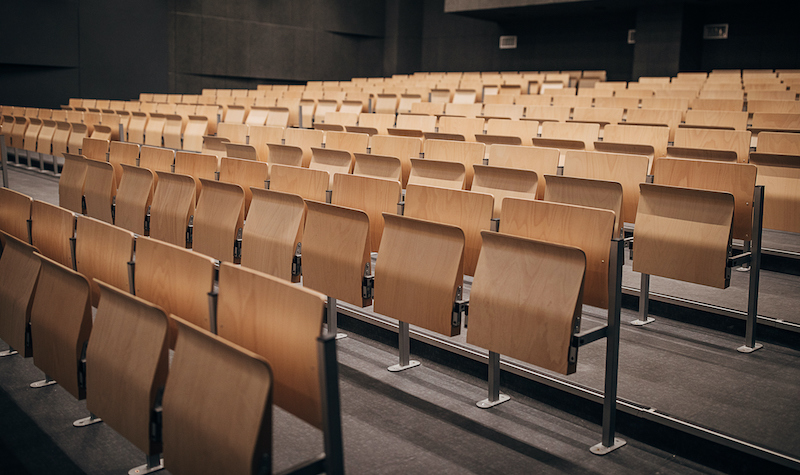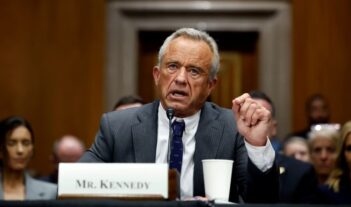
Higher education faces unique challenges in preventing and responding to the pandemic.
COVID-19 has been a test for higher education, but this year’s students are not the only ones feeling the pressure of a harsh curve. The Centers for Disease Control and Prevention (CDC) released a study showing that in the fall, COVID-19 infection rates declined where schools transitioned to remote learning and increased where schools taught in person. As schools implemented plans for the spring semester, the higher education industry faced heightened scrutiny.
In a forthcoming article, Patricia Salkin and Pamela Ko review the unique challenges of preventing the spread of COVID-19 in college and university settings. They evaluate the different approaches schools took and continue to take to navigate the pandemic and look to how COVID-19 will affect the future of higher education considering how different approaches could save the industry.
Colleges and universities function as microcosms for controlling and defeating the pandemic, according to Salkin and Ko. But unlike local governments, which rely on tax revenue, colleges and universities depend on tuition, housing, and other fees to remain financially viable.
To help schools address operating challenges presented by the pandemic, the CDC released guiding considerations and principles for institutions of higher education.
But despite information from the CDC and because institutions of higher education must also comply with state and local requirements, schools have varying reopening policies. Salkin and Ko analyze differences in COVID-19 testing, housing, and enforcement of distancing and masking regulations to provide a catalog of the different approaches that institutions of higher education have taken. Colleges and universities’ varying responses to the pandemic began during initial shutdowns and continued throughout the pandemic.
During initial shutdowns in the United States in March of 2020, the U.S. Department of Education granted institutions of higher education special exemptions authorizing remote instruction without loss of accreditation. But state policies were more difficult to comply with, Salkin and Ko argue.
Although colleges and universities could require on-campus residents to vacate their housing, administrators could not mandate that off-campus residents return home. Administrators struggled to enforce state orders and comply with travel bans when students were still living off campus and former on-campus residents wanted to return to retrieve their belongings. At Syracuse University, for example, administrators attempted to balance travel restrictions and students asking to retrieve personal belongings.
Some schools implemented a surveillance testing system where the entire student population or a random segment of the population was tested for COVID-19 on a regular basis. Many schools required students to get tested for COVID-19 prior to moving into a campus residence hall. Other schools only offered symptomatic testing. For example, Clemson University apparently required weekly testing for students living on campus, but Iowa State University required testing prior to move in and then randomly chose students for asymptomatic testing.
Due to concerns about students spreading the coronavirus through Thanksgiving holiday travel, some governors either made COVID-19 testing available to students or required students to have a negative COVID-19 test result to leave campus.
Beyond testing, Salkin and Ko observe that colleges and universities face unique housing challenges due to shared spaces and bathrooms. Many schools implemented a tiered approach to move in and restricted access to dormitories.
Many colleges and universities provided housing and dining refunds to students no longer using those services, but few colleges and universities provided tuition refunds. Salkin and Ko argued that the potential for remote instruction to continue for multiple semesters motivated multiple lawsuits from students asking for refunds.
In an effort to prevent multiple semesters of remote learning, colleges and universities implemented enforcement and disciplinary systems. Some schools bound students to agreements that outlined expectations for appropriate behavior and regulate student conduct both on and off campus.
Students have challenged the pandemic prevention measures and disciplinary actions through litigation alleging that the school response caused financial and reputational damages. Salkin and Ko conclude, however, that schools take action to control off-campus student activities due to community relations concerns if the institution of higher education receives the blame for community spread.
In the wake of uncertainty and a growing threat of class action lawsuits challenging school policies and alleging that schools owe students tuition refunds, Salkin and Ko provide examples of contractual changes colleges and universities have implemented to limit their liability in case they are sued for tuition, housing, or dining refunds. For example, the University of Maryland College Park reportedly amended its housing contract to reserve the right to close down housing to protect the health and safety of students and the community.
But students are not the only ones holding colleges and universities accountable. State and local governments pressure schools as well. Some states have required colleges and universities to submit plans for approval before reopening efforts could move forward.
Currently battling many lawsuits and anticipating more to come, colleges and universities face a complex regulatory framework when attempting to appease students, protect surrounding communities, and comply with federal, state, and local COVID-19 restrictions.
Salkin and Ko argue that COVID-19 has been a disrupter in higher education, challenging institutions to develop and implement regulatory schemes similar to local governments while balancing concerns about maintaining economic viability. Institutional approaches have varied due to the confines of state and local COVID-19 regulations and provide a range of potential solutions for reopening.
Salkin and Ko observe that the diversity of approaches to reopen colleges and universities demonstrate how regulations can succeed and how they can fail to protect students, community members, and the higher education industry. The myriad approaches to reopening under trying economic constraints provides the potential to show how colleges and universities can proceed during future semesters of uncertainly.



